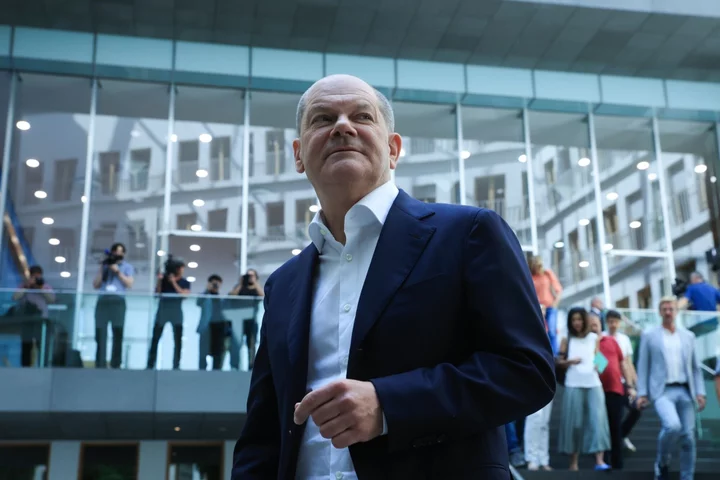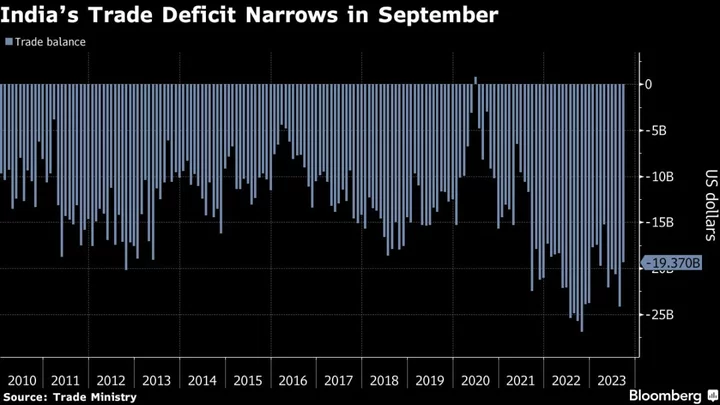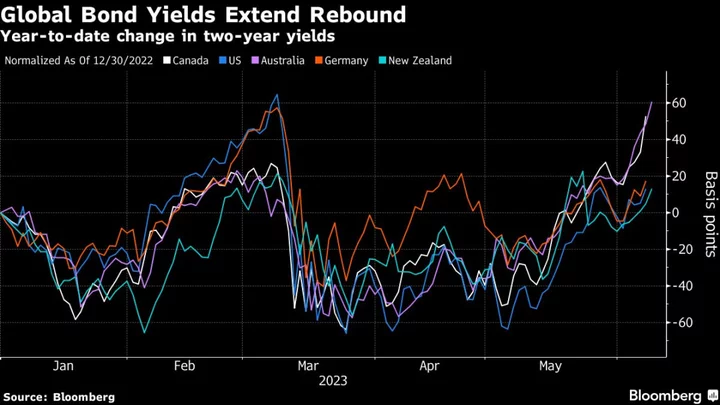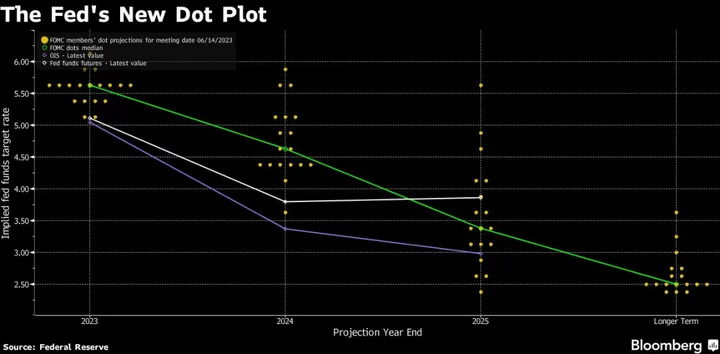Inflation in Canada slowed to within the central bank’s control range for the first time since March 2021, but progress in cooling underlying pressures has essentially stalled.
The consumer price index rose 2.8% in June from a year ago, Statistics Canada reported Tuesday in Ottawa. That’s slower than the median estimate of 3% in a Bloomberg survey of economists. On a monthly basis, the index rose 0.1%, also weaker than expectations of 0.3%.
Two key yearly inflation measures tracked closely by the Bank of Canada — the so-called trim and median core rates — also dropped, averaging 3.8%. That’s down from an upwardly revised 3.9% a month earlier but faster than 3.65% expected by economists.
While those figures showed deceleration, a three-month moving average of the core measures — which Governor Tiff Macklem has flagged as key to his team’s thinking — rose to an annualized pace of 3.81%, from 3.71% previously, according to Bloomberg calculations.
“It was the stickiness of core inflation measures which was a concern for the Bank of Canada, and with CPI-trim and median showing little further progress towards the target band there remains a very real risk that interest rates could be raised again after the summer,” Andrew Grantham, an economist at Canadian Imperial Bank of Commerce, said in a report to investors.
Market reaction was muted. Yields on benchmark two-year bonds were down slightly from before the release at 4.625% at 8:58 a.m. in Ottawa. The loonie was also trading lower, at 1.3225 per US dollar.
The numbers highlight the next challenge in the global inflation fight as headline figures moderate, partly due to base effects, but core inflation remains stubbornly high. In the euro area, the headline rate slowed to the lowest level since before Russia’s invasion of Ukraine, but core inflation reaccelerated in June as the cost of services picked up. In the US, inflation slid to a more than two-year low in June, but the comparison with a year ago — when the war in Ukraine drove up energy prices — made the slowdown look particularly dramatic.
The Bank of Canada, which restarted its hiking campaign in June, is acutely aware of the difficulty ahead in its inflation battle. The central bank raised rates for a second straight meeting last week. It also pushed back its expected date for reaching the 2% target by six months to mid-2025, with inflation forecast to remain near 3% for the next year.
“The next stage in the decline of inflation toward target is expected to take longer and is more uncertain. This is partly due to elevated services inflation, which can adjust sluggishly, and uncertainty about expected inflation,” the bank said last week, adding that greater excess demand and more stubborn core inflation are sustaining underlying price pressures.
While many economists expect the current overnight rate of 5% to be the peak, an accumulation of stronger than expected data that points to an economy still in excess demand with persistent core inflation could prompt Macklem and his officials to hike again as early as Sept. 6. This inflation print is the first of two reports before that decision.
In June, service inflation slowed to 4.2% from 4.6% one month earlier.
While the deceleration last month was fairly broad-based, another base-year effect in gasoline prices led to the slowdown in the headline figure. Excluding gasoline, the rate would have been 4% in June.
Gasoline prices fell 21.6% from a year earlier, and the year-over-year decline was a result of elevated prices in June 2022 amid higher global demand for crude oil as China eased some Covid-19 restrictions.
Consumers paid 14.7% less for cellular services from a year ago, a result of both lower prices for data plans and promotion pricing.
While Canadians had some reprieve in their cell phone bills, they continued to see elevated grocery prices and mortgage interest costs, with the former rising 9.1% from a year ago and the latter jumping 30.1%. Excluding mortgage interest costs, the headline rate would have been 2%.
Regionally, prices rose at a slower pace in June compared with May in eight provinces, and Prince Edward Island saw the weakest rate of year-over-year inflation, mainly the result of the largest decline in energy prices.
--With assistance from Chris Middleton.
(Updates with chart, market reaction, and economist comments.)
Author: Randy Thanthong-Knight









